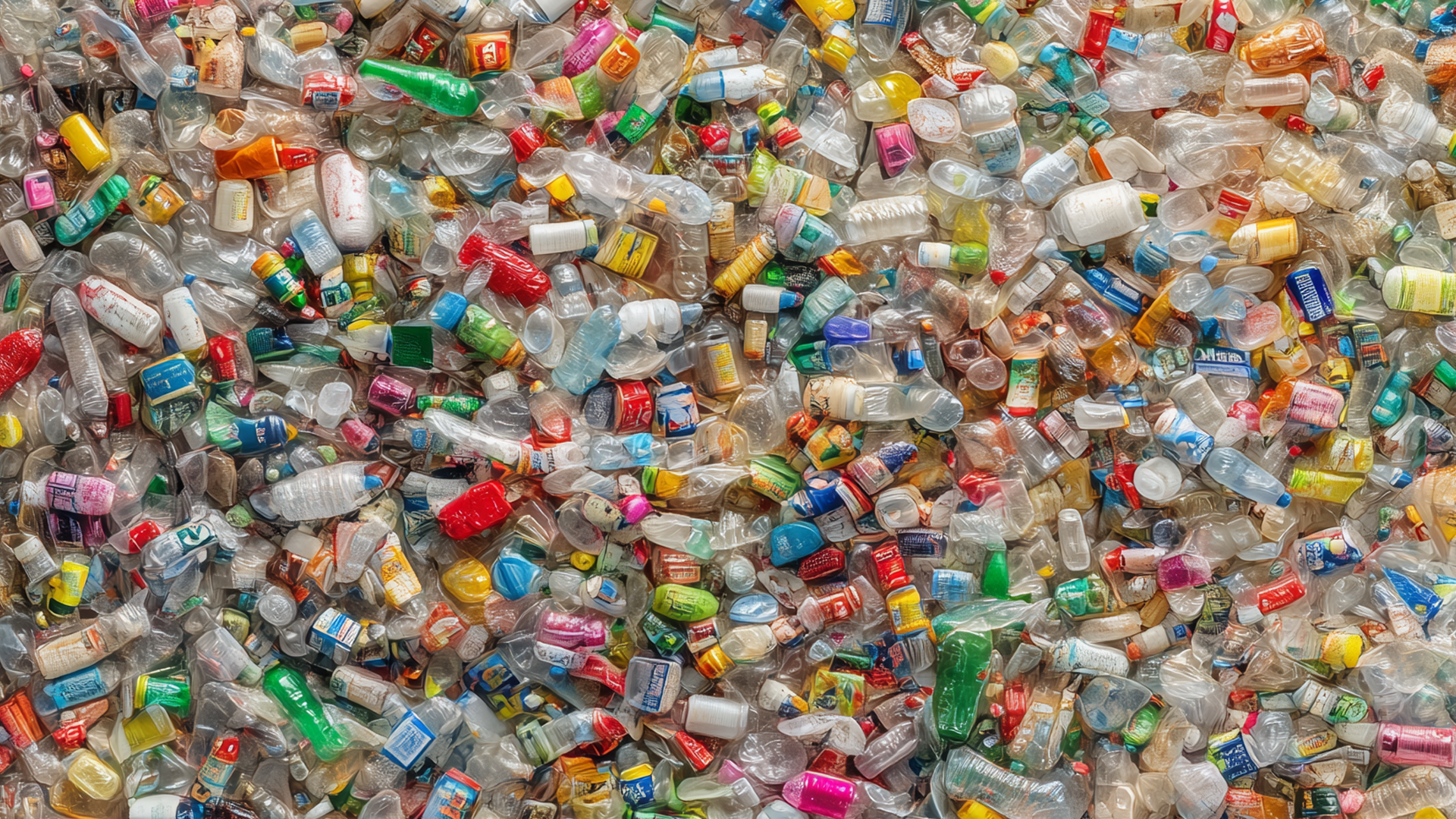Written by Malena Sanchez Moccero
Microplastics are in our food, water, and even the air we breathe. But how do you reduce your microplastic exposure without overhauling your entire life? These simple, science-backed steps can help you protect your health and the planet.
Life in plastic, it’s fantastic… Hmm, not really, Barbie Girl. If someone told you that you were eating a credit card’s worth of plastic every week, would you believe them?
Unfortunately, that’s what recent studies suggest. Microplastics—tiny plastic particles less than 5 millimeters in size—have made their way into our daily lives through drinking water, food, air, and household products. Although researchers are still exploring the full health effects of microplastics, early findings point to links with inflammation, hormone disruption, and even heart disease.
Reducing microplastic exposure isn’t just good for your health—it also supports a cleaner environment and helps cut down plastic pollution at the source.
What Are Microplastics?
Microplastics come from two main sources: primary microplastics (such as microbeads in cosmetics) and secondary microplastics, which form when larger plastic items break down. These particles end up in rivers, oceans, soil—and our bodies.
They’ve been detected in:
- Tap and bottled water
- Sea salt and seafood
- Fruits, vegetables, and even meat
- Household dust and indoor air
In 2024, researchers discovered microplastics in human arteries, raising red flags about their long-term health risks. These tiny plastics have also been found in organs such as the liver, blood, heart—as well as in the placenta, breast milk, sputum, semen, testicles, and urine. Research has even detected microplastics in human follicular fluid, representing an emerging threat to female fertility.
Why Reducing Microplastic Exposure Matters
The world produces more than 430 million tons of plastic each year. Without intervention, that number could nearly quadruple by 2050. Much of that plastic ends up as microplastic pollution, which doesn’t just harm marine life—it also cycles back to us.
Microplastics have been linked to:
- Inflammation and oxidative stress
- Hormone disruption
- Gut microbiome imbalance
- Potential reproductive and developmental effects
While more research is needed, limiting microplastic exposure is a smart move—especially since many changes are easy to implement.
How to Reduce Microplastics in Daily Life
Here are 8 practical ways to reduce your microplastic exposure:
1. Use Plastic-Free Personal Care Products
Many conventional cosmetics, exfoliants, and even toothpaste contain microplastics.
- Check labels for ingredients like polyethylene (PE) and polypropylene (PP).
- Choose natural, plastic-free skincare and body care.
- Use the Beat the Microbead app to scan for plastic ingredients in products.
2. Wear Natural Fiber Clothing
Clothing made from polyester, acrylic, or nylon sheds microplastic fibers during every wash.
- Switch to natural fibers like organic cotton, wool, hemp, or linen.
- Wash synthetic clothes less often, and use cold water to minimize shedding.
- Keep older synthetic garments—they shed fewer microfibers than new ones.
3. Use a Microfiber Filter in Your Washing Machine
Laundry is one of the largest household sources of microplastic pollution.
- Install a microfiber filter to catch particles before they enter wastewater.
- Use washing bags to trap microplastics.
- Dispose of collected fibers in the trash—not down the drain.
4. Avoid Heating Food in Plastic
Plastic containers can leach chemicals—especially when heated.
- Never microwave plastic containers, even if they’re “BPA-free.”
- Store and reheat food in glass, stainless steel, or ceramic.
- Avoid plastic wraps and single-use containers when possible.
5. Drink Filtered Tap Water (Not Bottled Water)
Bottled water has been found to contain up to 100 times more microplastics than tap water.
- Use a reverse osmosis or carbon-block water filter certified for microplastic reduction.
- Reusable stainless steel or glass water bottles are safer alternatives.
6. Say No to Single-Use Plastics
Disposable plastics break down into microplastics over time.
- Use reusable shopping bags, containers, cutlery, and straws.
- Avoid plastic-wrapped produce and snacks when possible.
- Support brands with sustainable or compostable packaging.
7. Limit Plastic Food Packaging
Food wrapped in plastic can absorb plasticizers like phthalates.
- Buy in bulk and bring your own containers when shopping.
- Opt for items packaged in paper, glass, or metal instead of plastic.
- Don’t reuse single-use plastic containers for food storage.
8. Improve Indoor Air Quality
Indoor air can contain airborne microplastics, especially in dust.
- Vacuum frequently with a HEPA filter.
- Use an air purifier and avoid plastic-heavy furnishings.
- Open windows regularly to circulate clean air.
What Are the Health Effects of Microplastics?
Although research is still emerging, several studies link microplastic ingestion and inhalation to:
- Inflammation and immune responses
- Changes in metabolism and gut bacteria
- Possible reproductive toxicity
- Cardiovascular issues
While definitive conclusions are still years away, experts recommend minimizing exposure—especially for children, whose developing bodies are more vulnerable.
Small Swaps, Big Impact
Avoiding microplastics entirely may not be possible, but reducing exposure is within reach for most of us. Swapping out a plastic container for glass, choosing natural fabrics, or filtering your water might seem small—but they add up.
These actions don’t just protect your body. They send a message to industries and governments that demand for a plastic-free future is growing.
You don’t have to be perfect. You just have to start.
